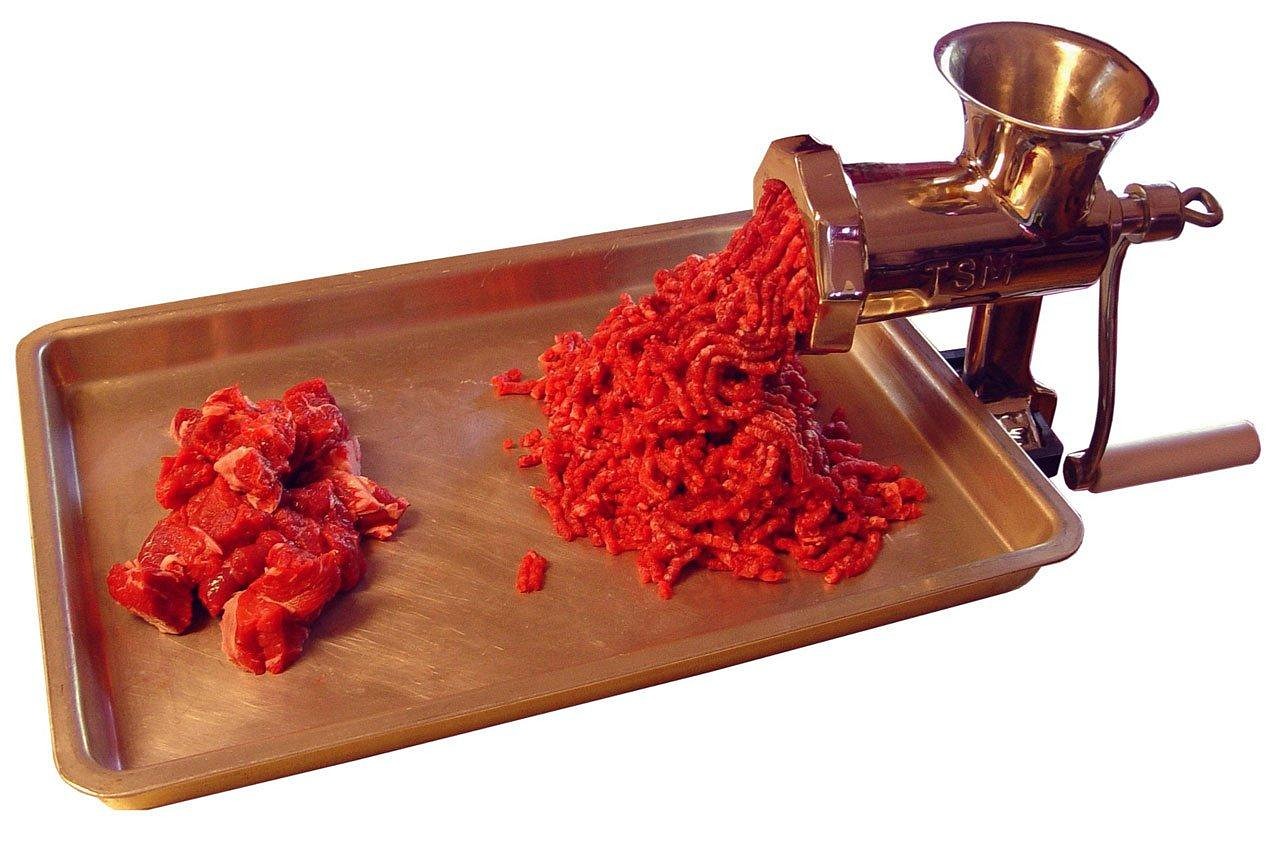Why Invest in a Cheap Meat Grinder for Home Use in 2025?
Buying a meat grinder is a significant step toward controlling the quality, freshness, and safety of the meat you consume. While professional-grade machines can cost hundreds or even thousands of dollars, modern manufacturing advancements mean that finding a reliable, high-performing cheap meat grinder is entirely possible. The goal is to identify models that offer maximum value without compromising essential features like food safety and motor longevity.
For the budget-conscious consumer, the primary search intent is finding the sweet spot: a machine that handles weekly grinding tasks—whether for sausage making, burger patties, or pet food—without requiring a massive financial outlay. This guide focuses on identifying the best budget options that meet the rigorous demands of home grinding in the current market, ensuring you get the most performance for your dollar.
Top Budget Meat Grinder Recommendations for the Home Kitchen
When looking to buy meat grinder equipment on a budget, it is crucial to balance motor power (for electric units) or structural integrity (for manual units) with the overall cost. The following recommendations represent the best balance of affordability and functionality available in 2025.
1. Best Overall Value: The 500W Entry-Level Electric Grinder
These models typically feature a robust 500-watt motor, which is sufficient for processing 1 to 2 pounds of chilled meat per minute. They often include essential accessories like multiple grinding plates (fine, medium, coarse) and a sausage stuffer kit. The key differentiator in this price bracket is the gear material; look for models that use metal gears rather than purely plastic components to ensure durability under strain.
- Pros: Excellent speed-to-cost ratio, handles most common cuts (beef, pork, venison), includes reverse function.
- Cons: Limited duty cycle (requires cooling breaks), often uses aluminum alloy housing instead of full stainless steel.
- Ideal For: Weekly burger preparation and occasional small-batch sausage making.
2. Best Manual Option: Heavy-Duty Cast Iron Grinder
For those prioritizing longevity and simplicity, a high-quality manual grinder remains the most durable and affordable long-term solution. Modern manual grinders, often size #8 or #10, are typically made of heavily tinned cast iron or stainless steel. They require physical effort but offer unmatched control and zero risk of motor burnout.
- Pros: Extremely durable, no electrical components to fail, easy to clean, highly portable.
- Cons: Requires significant effort, slower processing speed, best used with very cold, pre-cut meat.
- Ideal For: Off-grid use, processing small batches of very tough or sinewy meats, or users who prefer total control over the grind texture.
3. Best for Occasional Use: Stand Mixer Grinder Attachments
If you already own a powerful stand mixer, purchasing a grinder attachment is often the most cost-effective way to start grinding. While these attachments are typically slower than dedicated electric units, they leverage the mixer’s existing motor and save counter space. Ensure the attachment is made of metal (stainless steel or aluminum) rather than plastic for better performance and temperature control.
- Pros: Saves money and space, utilizes existing kitchen equipment, easy setup.
- Cons: Puts strain on the mixer motor, slower throughput, meat tends to warm up faster.
- Recommendation: Prioritize the official manufacturer’s attachment or a highly-rated third-party stainless steel version for optimal results.
Defining “Cheap”: What to Expect from Budget Models
When shopping for a cheap meat grinder, setting realistic expectations is vital. Budget models are defined by their price point (typically under $150 USD) and the compromises made in components and capacity compared to commercial-grade equipment.
Duty Cycle and Motor Limitations
High-end grinders are designed for continuous operation (a high duty cycle). Cheap electric models, however, usually have a low duty cycle. This means the motor is designed to run for a short period (e.g., 5-10 minutes) before needing a mandatory cooling break. Ignoring this can lead to overheating and premature motor failure.
- Actionable Tip: If you plan to process more than 10 pounds of meat in a single session, you may need to budget for a slightly higher-wattage machine (700W+) or plan for multiple cooling breaks.
Material Quality: The Stainless Steel vs. Aluminum Debate
While professional grinders are almost exclusively stainless steel (which is non-reactive, highly durable, and easy to sanitize), many budget grinders use aluminum alloy or plastic housing.
- Aluminum: Lightweight and affordable, but can react with acidic foods and is not dishwasher safe. If you opt for aluminum, ensure the internal grinding components (plates, blades) are stainless steel.
- Stainless Steel: The gold standard. Look for stainless steel cutting blades and grinding plates, even if the exterior housing is plastic. This ensures longevity and prevents rust, which is critical for food safety.
Gear System Integrity
The motor drives the auger via a gear system. In budget models, these gears are often made of durable plastic (nylon or acetal). While metal gears are superior, well-designed plastic gears can handle moderate loads if the user adheres to the duty cycle limits and avoids grinding bone or gristle. Always check reviews specifically for gear failure reports when considering a low-cost unit.
Critical Features to Prioritize When Buying a Cheap Meat Grinder
To ensure your investment is worthwhile, focus on these non-negotiable features, even when seeking the lowest price point.
1. Motor Wattage and Peak Power
Look for a continuous running wattage (not just the peak or locked wattage). A minimum of 350W continuous power is recommended for effective home grinding. Peak wattage (often advertised prominently) refers to the power drawn just before the motor stalls, which is less relevant to sustained performance.
2. Reverse Function
This is essential. When sinew or connective tissue wraps around the auger, the reverse function allows you to clear the jam without disassembling the entire unit. This feature significantly reduces frustration and potential motor strain.
3. Size and Capacity (Grinder Head)
Meat grinders are sized by the diameter of the grinding plate (e.g., #5, #8, #12). For home use, a #8 size is the most common and versatile, offering a good balance between throughput and cost. Smaller #5 units are cheaper but process meat much slower, increasing the risk of warming the meat.
4. Safety and Stability
Ensure the unit has non-slip feet or suction cups to prevent movement during operation. For electric models, look for thermal protection—a built-in circuit breaker that automatically shuts the unit off if it overheats, protecting the motor from permanent damage.
Manual vs. Electric: The Budget Grinder Showdown
The choice between a manual and electric cheap meat grinder depends entirely on your intended usage and budget allocation.
| Feature | Manual Grinder (Budget) | Electric Grinder (Budget) |
|---|---|---|
| Initial Cost | Very Low ($25 – $50) | Moderate ($75 – $150) |
| Durability | Extremely High (Lifetime) | Moderate (Dependent on motor/gears) |
| Processing Speed | Slow (User-dependent) | Fast (1-2 lbs/min) |
| Maintenance | Simple cleaning, requires oiling | More complex, requires careful cleaning of internal parts |
| Best For | Small batches, tough meat, high control | Medium batches, speed, convenience |
If your budget is extremely tight and you only grind meat once a month, a high-quality manual unit is the superior choice for long-term reliability. If you grind weekly or process more than five pounds at a time, the time savings and convenience of an electric model justify the higher initial cost.
For more detailed information on specific components, review our guide on https://meatgrinderhelp.com/.
Maximizing the Lifespan of Your Budget Grinder
Budget grinders require careful handling to ensure they last. Proper technique and maintenance are paramount.
1. The Importance of Chilling
Meat must be near freezing (around 30°F to 32°F) before grinding. This prevents smearing, ensures a clean cut, and reduces the strain on the motor. Warm meat forces the motor to work harder and increases the risk of bacterial growth. Cut the meat into strips or cubes that fit easily into the feed tube and chill them, along with the auger, housing, and blades, for at least 30 minutes before starting.
2. Pre-Cutting and Preparation
Remove as much sinew, silver skin, and bone fragments as possible. These are the primary causes of jamming and motor burnout in budget electric models. The less resistance the auger encounters, the longer the motor will last.
3. Immediate and Proper Cleaning
Never leave meat residue in the grinder. Meat fat solidifies quickly, making cleaning difficult and creating a perfect environment for bacteria. Disassemble the unit immediately after use. Use warm, soapy water and a brush to clean all components. For cast iron manual grinders, ensure they are thoroughly dried and lightly oiled (using food-grade mineral oil) to prevent rust.
For advanced grinding techniques, focusing on temperature control is key to achieving professional results, even with a budget machine.
Frequently Asked Questions (FAQ)
Q: Can cheap meat grinders handle chicken bones for pet food?
A: Generally, no. Most budget electric meat grinders are designed only for boneless, soft meat and fat. Grinding bones, even small poultry bones, requires a commercial-grade grinder with a high horsepower motor and hardened steel components. Attempting to grind bones in a cheap unit will likely strip the plastic gears or burn out the motor.
Q: How often should I sharpen the blades and plates on a budget grinder?
A: The blades and plates should be sharpened whenever you notice the meat is being smeared rather than cut cleanly. For typical home use (once or twice a month), sharpening might be needed every 6 to 12 months. Dull blades increase motor strain significantly. Replacement blades and plates are often inexpensive for common #8 size grinders.
Q: Is it safe to buy a used meat grinder to save money?
A: Buying a used manual grinder is often safe, provided you can thoroughly clean and sanitize it. However, buying a used electric grinder is risky. Motor wear is often invisible, and a used budget motor may fail quickly. If you purchase a used electric unit, test it rigorously and inspect the gears for signs of wear or cracking.
Q: What is the difference between a meat grinder and a food processor for grinding meat?
A: A meat grinder uses an auger and a fixed plate to push and cut the meat, resulting in a consistent, fluffy texture ideal for burgers and sausages. A food processor uses spinning blades to chop the meat, which often results in a paste-like, uneven, and dense texture. For true ground meat quality, a dedicated grinder is always superior, even a cheap meat grinder.
Q: How do I prevent rust on my cast iron manual grinder?
A: After washing with hot, soapy water, immediately dry all parts completely. Then, apply a thin layer of food-grade mineral oil or shortening to all metal surfaces before storage. Store the parts disassembled in a dry location.
Making the Smart Purchase
Finding the best cheap meat grinder requires prioritizing internal components (stainless steel blades, metal gears) over external aesthetics or inflated peak wattage claims. By focusing on models known for reliable motors and adhering strictly to proper meat chilling and duty cycle limits, you can achieve professional-quality ground meat at home without breaking your budget. Always check the manufacturer’s warranty and return policy before finalizing your purchase.
References
- USDA Food Safety and Inspection Service. . 2024. — Provides guidelines on safe temperatures and handling practices crucial for home meat grinding, emphasizing the need to keep meat below 40°F.
- Consumer Reports. https://www.consumerreports.org/. 2024. https://www.consumerreports.org/ — Details the testing methodology for evaluating motor strength, gear quality, and overall longevity of kitchen appliances like meat grinders, which is essential when assessing budget models.
- National Sanitation Foundation (NSF). . 2024. — Outlines the material requirements (e.g., stainless steel grades) necessary for equipment used in food preparation to ensure sanitation and safety, guiding consumers on acceptable budget materials.
Last Updated on October 14, 2025 by Robert Vance

